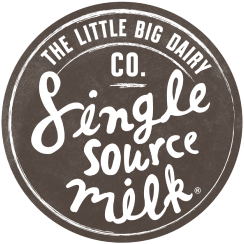What's In Your Milk - Composition, Nutrients & More
From the moment we are born, milk makes up an integral part of our diet. This nutrient-rich liquid has been an important staple for centuries, valued for its creamy taste and health benefits. Full of calcium, protein, and essential vitamins, milk supports bone health and overall nutrition. From dairy to...
Single Source Unhomogenised Milk - Your Milk Without Additives
Unhomogenised milk is becoming more popular as it’s sought out for its purity, authenticity, and farm-fresh quality. Sourced from a single farm or herd, unhomogenised milk is consistent in taste and easily traceable, appealing to consumers who value transparency in their food. Unlike standard homogenised milk, the natural cream rises...
What Makes Single-Source Milk Different from Blended Milk?
Many years ago, milk was obtained directly from the farm, and so its source was always known. In more recent times, however, the process has changed and become more complex. Milk is now generally sold to a producer where it is mixed with other milk, processed in some way, and...
Is Low-Fat Milk Really Healthy? A Nutritional Comparison
There was a time in the 1980s when low-fat or fat-free products were preferred to higher-fat items. The avoidance of fat, in fact, was preached by many health experts. Attitudes have changed somewhat, with many believing that a degree of fat is not a bad thing. However, consuming large quantities...
Is your Milk Powdered, Recombined, or Fresh?
Milk is available in an increasing number of forms. The majority of milk is obtained from cows, but can also be from other animals (such as goats), while plant-based milk is also increasingly available (almond, soya and coconut milk, for example). Processing and additives can be used to create a...
The Health Benefits of Incorporating Full-Cream Milk into Your Diet
Many people nowadays drink semi-skimmed or skimmed milk, where a lot of the fat content has been removed. This is largely for health reasons because fat is thought to be bad. There are now many different choices for milk, and full cream milk is one of them. It is an...






